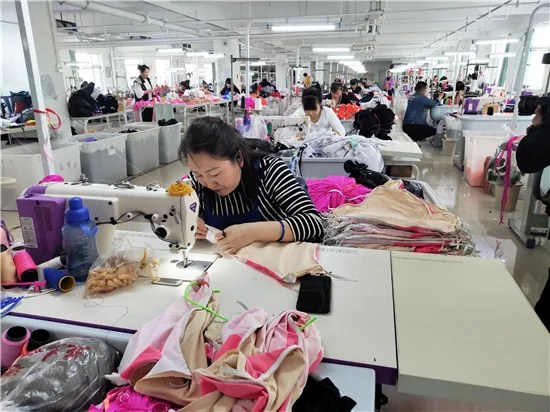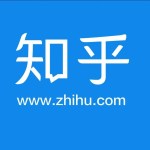How-to & Go-to Guides of All Things Around China.
Nestled along China’s northeastern coast, Huludao—once a sleepy industrial city—is now a global powerhouse in swimwear production. With 1.7 billion swimsuits produced annually and a 25%+ share of the global market , this coastal gem has transformed into a thriving hub for fashion, innovation, and cultural fusion. This article dives into Huludao’s swimwear ecosystem, exploring its rise to dominance, technological advancements, and unique blend of industry and tourism, optimized for SEO with keywords like “Huludao swimwear industry,” “China swimwear manufacturing,” and “global swimwear supply chain.”
1. The Rise of a Global Giant: From Coastal Craft to Industrial Empire
Huludao’s swimwear journey began in the 1980s when local entrepreneurs started small workshops to cater to tourists visiting Xingcheng’s pristine beaches . What started as a cottage industry evolved into a $2.1 billion cluster with 1,300+ factories and 80,000+ workers , fueled by three key factors:
Strategic Location & Historical Roots
Huludao’s proximity to the Bohai Sea provided easy access to beach tourism, while its chemical engineering legacy (dating back to 新中国成立初期) ensured a steady supply of synthetic fabrics like nylon and spandex . This “front-end material 优势” allowed local manufacturers to vertically integrate production, from raw materials to finished products—a rarity in global fashion.
Government-Driven Innovation
In the 2010s, Huludao’s government launched initiatives to transform the industry. Key measures included:
- Tech Upgrades: Subsidizing factories to adopt AI-driven design tools and smart production lines, cutting prototyping time from weeks to hours .
- Cluster Development: Designating Xingcheng as a National Swimwear Industry Base, fostering collaboration among SMEs through shared testing facilities and joint marketing campaigns .
- Cultural Branding: Commissioning the hit TV series “Riding the Waves” to showcase Huludao’s swimwear history, boosting global visibility .
Market Agility
Huludao’s small-batch, quick-response model mirrors SHEIN’s success. Factories produce 100–500 units per design initially, scaling to 3,000+ units within days if a style trends. This flexibility allows Huludao to capture TikTok viral trends like “Balletcore” faster than competitors .
2. Cutting-Edge Technology: The Brain Behind the Bikinis
Huludao’s factories are at the forefront of Industry 4.0:
Digital Transformation
- 3D Prototyping & AI Design: Companies like Liaoning Xingbiaoyi use 3D virtual fitting rooms and AI algorithms to analyze global fashion trends, reducing design-to-market time by 70% .
- Blockchain Traceability: QR codes on garments let consumers trace materials from recycled plastic bottles to factory workflows, enhancing transparency and sustainability .
- Smart Warehousing: Automated sorting systems at Xingcheng’s logistics hubs process 150,000+ orders daily, with 80% of EU-bound shipments delivered within 7 days via overseas warehouses .
Sustainability Initiatives
While challenges remain, Huludao is adopting eco-friendly practices:
- Waterless Dyeing: Factories like Stawell Swimwear use cold-transfer technology, cutting water consumption by 70% compared to traditional methods .
- Recycled Materials: Over 30% of Huludao’s swimwear now incorporates recycled polyester, with plans to reach 50% by 2025 .
3. A City Reinvented: From Factories to Fashion Tourism
Huludao seamlessly blends industry with tourism, offering visitors a behind-the-scenes look at swimwear production:
Factory Tours & Cultural Experiences
- Xingcheng Swimwear Museum: Learn about the industry’s 40-year history through interactive exhibits and vintage swimsuit displays .
- Stawell Swimwear Superpark: Tour automated production lines, then customize your own swimsuit using AI design tools .
- DIY Workshops: Try your hand at sewing or fabric printing at local studios like Yaji Fashion Lab.
Beachside Destinations
After exploring factories, unwind at Huludao’s world-class beaches:
- Xingcheng Seaside National Park: A 1.5km stretch of golden sand with crystal-clear waters, ideal for swimming and sunbathing .
- Juhua Island: A scenic island accessible by ferry, offering hiking trails and ancient temples .
Cultural Festivals
- Huludao International Swimwear Expo: Held annually, this event showcases new designs, hosts fashion shows, and attracts buyers from 50+ countries .
- Winter Wonderland: In colder months, Huludao transforms into a 冰雪旅游 paradise, with ice sculpture festivals and hot spring resorts .
4. Challenges & the Road Ahead
Despite its success, Huludao faces hurdles:
- Labor Costs: Rising wages threaten to erode cost competitiveness. Factories are countering this by automating 30% of workflows .
- Sustainability Pressures: While eco-friendly initiatives are underway, only 15% of Huludao’s factories meet international environmental standards .
- Intellectual Property: Design 抄袭 remains a concern, prompting the city to launch a swimwear IP protection center in 2024 .
To address these, Huludao is focusing on brand diversification (expanding into yoga wear and athleisure) and tech-driven efficiency, aiming to achieve $3 billion in annual revenue by 2025 .
Conclusion: Where Industry Meets the Sea
Huludao’s story is one of reinvention—transforming from a rustbelt city into a global fashion hub while preserving its coastal charm. Whether you’re a fashion enthusiast, a sustainability advocate, or a curious traveler, Huludao offers a unique blend of industrial prowess and natural beauty. Visit to witness the future of swimwear manufacturing, relax on its pristine beaches, and experience the Huludao spirit firsthand.
Ready to explore? Check out our Huludao Travel Guide or shop Huludao’s latest designs here. 🌊
数据来源:
- 葫芦岛市人民政府 (Huludao Municipal Government)
- 中国海关总署 (China Customs)
- 兴城市泳装产业高质量发展规划 (2023–2025)








